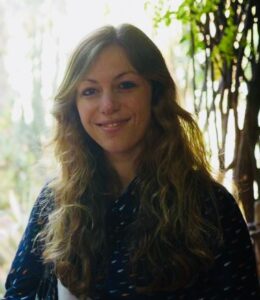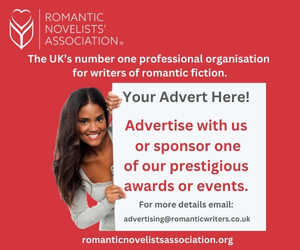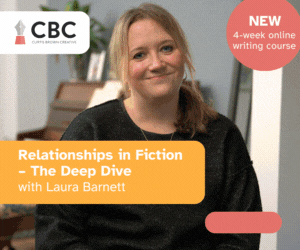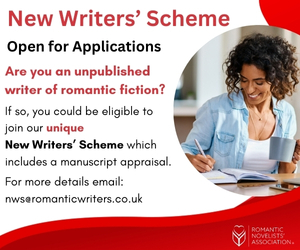Ask An Industry Expert: Emily Bedford
23 October 2020
Today I’m delighted to welcome Emily Bedford, Commissioning Editor at Canelo
 Hello and welcome, Emily. Could I begin by asking you about Canelo, which I believe is now five years old. Could you tell us a little of the achievements of these early years and also tell us about your own particular role?
Hello and welcome, Emily. Could I begin by asking you about Canelo, which I believe is now five years old. Could you tell us a little of the achievements of these early years and also tell us about your own particular role?
Sadly I wasn’t at Canelo for the early years, but I know the company is proud of the fact that we are one of Europe’s fastest growing publishers and that we’ve brought beloved novels by authors like Teresa Crane and Maisie Mosco into new formats with gorgeous repackaging for contemporary readers. Our new print programme is something we’re all incredibly proud of as well, and it’s been so exciting to watch our writers reach new readers and appear on bookshelves in physical stores.
In terms of my role, I joined over a year ago as the commissioning editor for Canelo’s romance, saga and contemporary fiction publishing. I like to think of myself as representing the sunshine side of Canelo’s publishing – most of my books are uplifting with a guaranteed happy ever after or happy for now, which I’ve been needing more than ever this year!
And don’t we need that sunshine right now! We see that quite a lot of publishing houses are setting up dedicated ebook imprints these days. What if anything makes Canelo different?
I think the fact that Canelo started as an ebook-only publisher means we have a different mindset from the beginning when we approach our books, from acquisitions all the way through to post-publication. We can be flexible, fast and reactive, without having to come up against ‘but we’ve always done it this way’ if someone wants to try something new. The whole team knows we need to be innovative in how we reach readers, which means we’re all on the same page and working together.
And clearly getting it right for readers—congratulations that one of your authors won the Romantic Thriller category in the RNA’s reader-judged awards for 2020. I also notice that Canelo recently launched its own crime fiction imprint. Does having a story line involving an adventure or a mystery to be solved, or crime/thriller content, make a story more saleable because of widening the appeal, compared to ‘just romance’?
Thank you! We were so happy for Samantha Tonge on winning her RNA award, against some really tough competition! It’s always helpful for a romance to have a particular hook, and often adventure or mystery appeals to a broad audience, but I have found that there’s not always overlap in readership between general romance and romantic suspense/thriller – not all romance fans want crime, danger and that level of pace in their reading experience, and similarly not all romantic suspense readers fancy a mild-conflict, character-driven plot. Generally, romance readers are there for the happy-ever-after but they’re also reading for the emotional journey of the protagonists and this often involves a mystery element – whether it’s a love interest keeping a secret or finding out why the protagonists are holding themselves back from love.
How do you decide the genre classification of a novel and does that choice then influence things like the cover design or how you market it?
Usually the genre is fairly clear from the outset, where the agent or author themselves have specified, but occasionally I’ll need to give the author a steer on making the genre clearer based on discussions with the rest of the team. Everyone has their own sense of what’s needed in a story for it to fall within a certain genre, but there are usually key genre markers that, as a whole, the market can agree on, such as romance needing two protagonists finding their happy ever after together, romantic suspense needing a prominent mystery plot, or saga requiring a historical setting and female protagonist with a focus on her development as she overcomes a series of life obstacles.
The choice of genre definitely influences cover design and marketing! We want readers to know the second they look at a cover and a strap line if it’s a book for them or not, and often readers will gravitate towards a particular genre. What we don’t want readers to do is buy a book thinking it will be one genre only to discover it’s not, as they’ll be vocal in their disappointment in review form.
What store do you set by competitions? There are quite a lot around these days. How important are they for the author and the publisher?
For the author, competitions can be absolutely brilliant – it’s additional recognition of their hard work (which they deserve!) and a great opportunity for them to meet with their peers. More and more we’re seeing competitions set up to showcase writers who have been historically under-represented, which has been a long time coming and I hope helps in putting these authors on readers’ and the press’s radars.
For publishers, it’s wonderful to have more reason to shout about your books on social media and to see your authors being rewarded in this way. But competitions can be hit or miss in boosting sales or driving traffic to the book, and they can be expensive to enter which becomes tricky when, as you say, there are quite a lot around these days!
I notice Canelo now publishes paperbacks as well as ebooks. Is this true for all new books, or do you try out the market with the ebook first? And has the recent C-19 situation had an effect on the print market?
At the moment we don’t initially publish all books in paperback but we do now look at print potential in our submissions, whether it’s simultaneous or staggered to build reviews around the ebook first. We’re also hiring a Senior Key Account Manager to specifically grow our print area so who knows what this could mean for Canelo’s print future!
The pandemic has had an impact on the print market as readers turn towards ebooks or other forms of entertainment during lockdown. It’s been a lot more uncertain during this time on whether or not we’d have the distribution available for our paperbacks and we had to postpone a number of publications during lockdown. This has now returned to normal(ish) but there’s still that overhanging question of how long this ‘new normal’ will last and if we’ll need to go back to lockdown mode again.
You mentioned the benefit of competitions to showcase under-represented writers. Diversity and inclusion are high on the agenda for the RNA, as for many other organisations, and I note Canelo is seeking submissions from ‘marginalised voices’. How do you encourage this and how does Canelo’s selection of books and authors reflects these principles?
Canelo is always actively seeking stories from under-represented voices for our front list. At select times we open our general submissions for specific genres and I’m a fan of blind submissions in terms of not asking authors for biographies – I think this encourages people to feel freer with submitting and it removes unconscious bias from the process for a fairer system. Canelo also works with literary agents with their own focus on building diversity in publishing. We know we can do better and, as a team, are striving to do so.
What is your typical working day like? (though I realise the C-19 answer will be different!)
I’m still trying to find my ‘new normal’ working from home! I had a phase of starting the day with yoga before logging on, but now I’m in peak submissions season I instead try to carve out some reading time before I start my day. Then it’s a case of checking emails and Slack messages, and figuring out what to prioritise for the day to make an achievable (sometimes) to do list. At the moment I have a few edits to work on so they’re taking up most of my time, but I’m also at contract stage with a number of authors which requires a lot of back and forth. I’m behind on briefing covers for new books so that’s looming on the horizon as well!
What’s the best/worst part of your job?
I enjoy the variety of my role and the creative satisfaction in steering a new book through to publication and sales and satisfied readers. I also still have to pinch myself that I get paid to read so many books – which has its flipside in also being the worst part of my job, when I have to pass up a good submission because it simply doesn’t fit on my list! I have a couple of submissions that still haunt me because they were wonderful stories but weren’t what I was looking for at the time. I always hope that the author will have found success elsewhere and every now and then I like to search for them on Amazon to see what they’re up to.
If you actually have time to read for pleasure, can you tell us the last published book you read which you really enjoyed and why?
It’s actually been a scarily long time since I read something non-work related! The last book I read and really enjoyed was Take A Hint, Dani Brown by Talia Hibbert – it’s one of those reads that follows you around for a little while afterwards, with snippets and scenes jumping into your head at random moments. Talia is a phenomenal writer whose characters feel like your friends from the first time you meet them. Her romances are clever, warm, witty and unique, and I love that she takes real life, big issue topics and writes them with compassion and humour. Take A Hint, Dani Brown is the kind of book that makes you cry on one page and laugh out loud on the next – it was the perfect catharsis for me during lockdown!
If you wrote a book yourself, what genre would it be?
I would love to write fantasy – with dragons! There’s something so appealing about building an entirely new world and infusing it with magic and mythology. And it would be great to write a bad-ass heroine who could perhaps inspire me to take more risks and become a dab hand at sword fighting!
Thanks for finding time to talk to us at such a busy time.
You can find Emily on Twitter at: @EmBedfd
And more about Canelo at: https://www.canelo.co/
*
Emily was talking with Susan Leona Fisher: (Website: http://www.SLFisherAuthor.co.uk)




